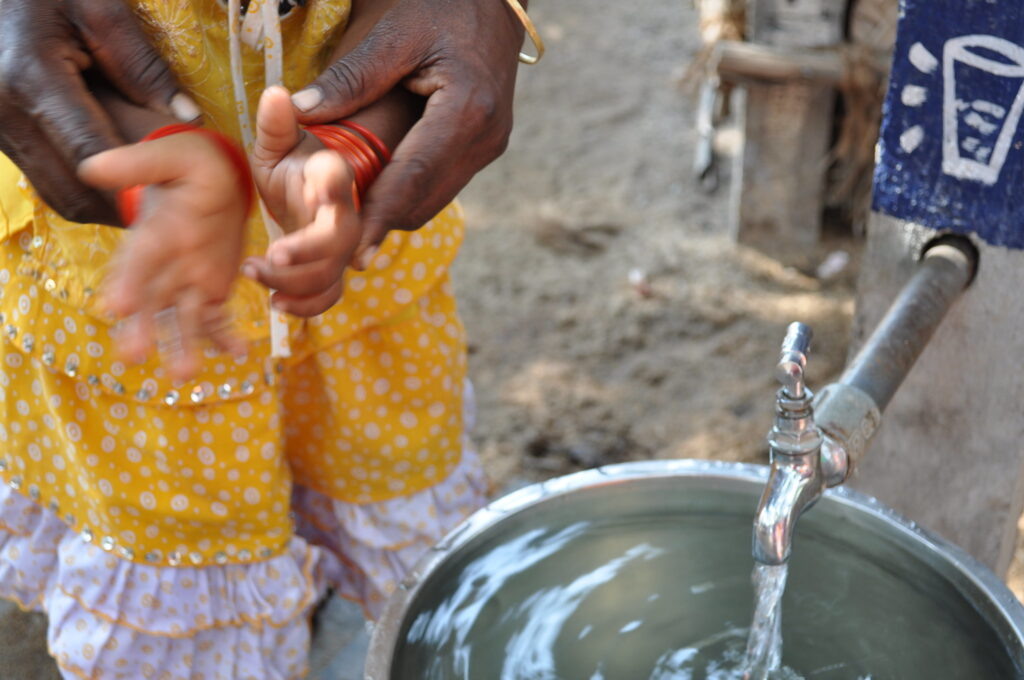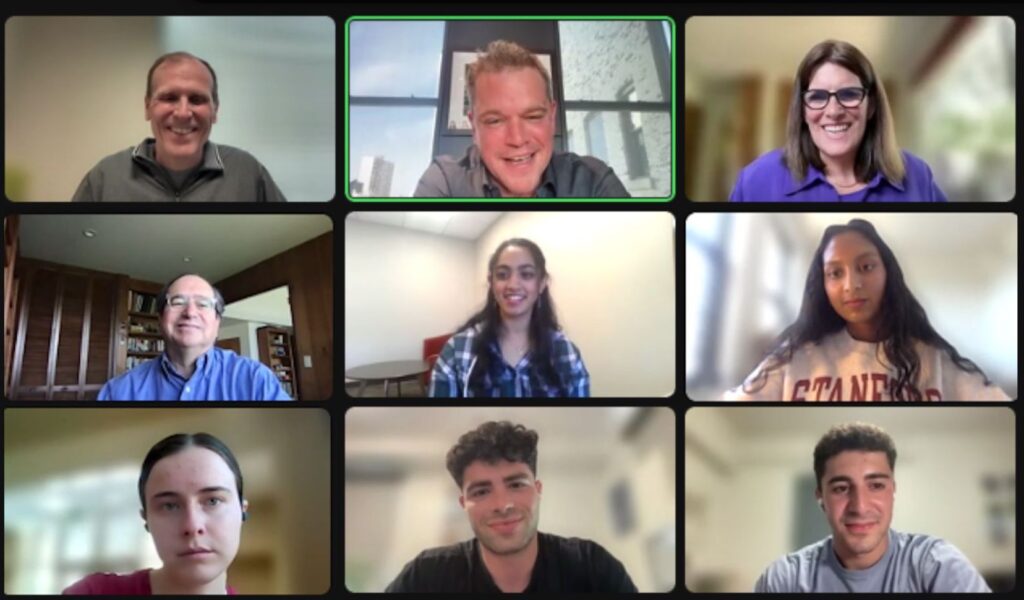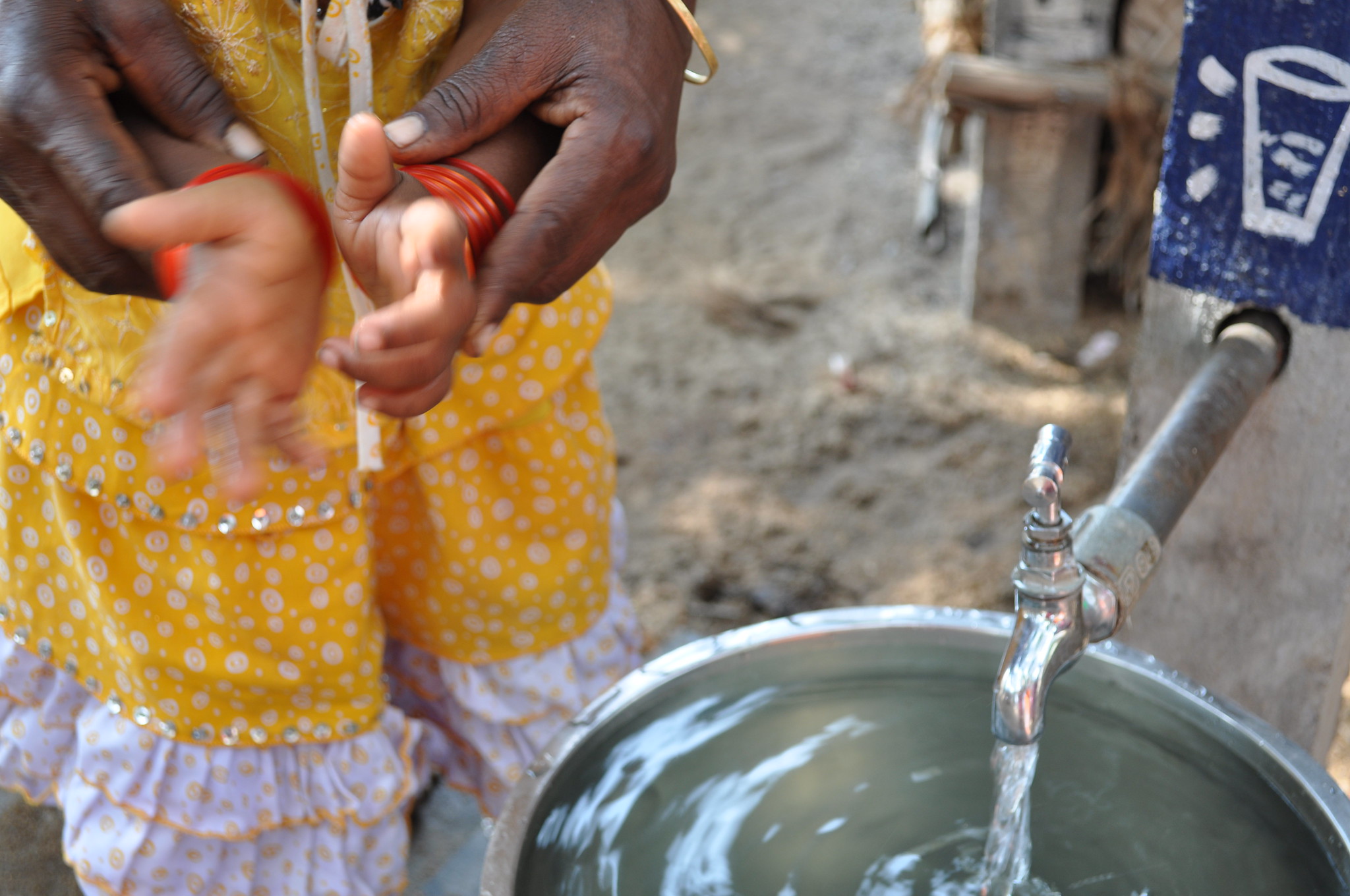Published: 05/26/2023

Actor Matt Damon and social entrepreneur Gary White urge students to fearlessly take on the social issues they see
By Jamie Hansen, Global Health Communications Manager
On a trip to rural Zambia, actor and water and sanitation access advocate Matt Damon accompanied a local girl on her mile-long walk to gather water from the nearest well. She shared her hopes of leaving her small village and becoming a nurse in her country’s capital. At first, Damon was struck by the similarity to his own childhood dream of moving to a big city to become an actor. But as he drove away, he realized the privilege of being able to dream like that.
“If someone had not had the foresight to sink that well a mile from this kid’s home, she wouldn’t be in school. She would be spending her entire day looking for water,” he said. “This girl had this dream of contributing to the economic engine of her country, moving to the big city, and being a nurse. She would have had none of that if she didn’t have this access to water.”

Around the world, one out of every ten people (771 million) lacks access to clean drinking water, compromising their health, education, and livelihoods. The problem disproportionately impacts women and girls, who are often tasked with walking hours each day to gather water for their families.
Speaking on May 25 to Stanford students and community members, Damon and social entrepreneur Gary White, co-founders of Water.org and the asset manager WaterEquity, shared their innovative efforts to empower more than 54 million people with access to safe water and/or sanitation through affordable financing. White and Damon are also co-authors of a new book on their mission to end the global water crisis.
The Global Leaders and Innovators in Human & Planetary Health: Sustainable Societies Lab hosted the speakers and opened this special session to the Stanford community with support from Stanford’s Center for Innovation in Global Health and Woods Institute for the Environment.
“In our course, we’ve been grappling with ways to design solutions to global problems and heal the world as called for in the Jewish concept of Tikkun Olam,” said Gordon Bloom, MBA, MFA, co-leader of the course along with Sara Singer, MBA, PhD, and director of the Social Entrepreneurship and Innovation Lab for Human & Planetary Health. “We’re inspired by the work of Gary White and Matt Damon, who are doing just that at WaterEquity and Water.org.”

White, a civil and environmental engineer by training, became committed to improving global access to water while traveling to Guatemala as an undergraduate student, where he saw children impacted by scarce and contaminated drinking water. His initial efforts centered on building wells for communities in need, but he wanted to do more.
He traveled the world, listening to and working with people impacted by the water crisis. In India, he met a woman who was paying 125% interest to buy a toilet — interest that would leave her with crushing debt.
He considered the millions of hours that communities were investing in hauling water or paying back high-interest loans and wondered: “What if we could give people access to small, affordable loans, so they could get the water and sanitation solutions that were best for them, rather than seeing it as a pure charity issue?”
“What if we could give people access to small, affordable loans, so they could get the water and sanitation solutions that were best for them, rather than seeing it as a pure charity issue?”
Gary White, Socieal Enterpreneur
He worked with local ngos and financing institutions to provide microloans to residents, mainly women, to develop their own water solutions.
In 2009, White joined forces with Damon, who had created his own organization to address the water crisis in Africa. Their organizations coalesced as Water.org. Later, when they realized that lenders didn’t have enough money to meet the large demand for loans, they moved into the world of social impact investing. They created WaterEquity, an impact investment asset manager that invests in financial institutions to help them expand their water and sanitation lending portfolios.
“I never imagined I would become a microfinance expert,” White said. At first, he said, investors were skeptical: “They wondered, ‘How are poor [people] making a few dollars a day ever going to repay a loan that will allow a financial return?’” he recalled. White and Damon built the asset manager anyway, with the help of experts in the field, “because nobody told us we couldn’t.” Today, Water.org’s loan repayment rate is an impressive 98%.
“I had no idea this journey would end up this way,” Damon said. “If you leave with anything today, it’s to not be afraid to not know — to not be afraid to dive in. Whatever issue you want to work on, you’re going to be amazed at the road that takes you there, and it’s going to be exciting and worth it.”
If you leave with anything today, it’s to not be afraid to not know — to not be afraid to dive in.
Matt Damon, Actor and Water Equity Advocate
White also encouraged students to follow their passions and interests — particularly where they align with unmet social needs.
“If you see a social problem that really speaks to you, whether it’s involving water or anything else, do something about it,” he said. “Jump in and don’t be afraid to start something up and go forward.”
Learn More
Watch a short video about water.org’s work to end the global water crisis.
Read the book, “The Worth of Water.” All proceeds go to water.org.
Learn more about human and planetary health research and education at Stanford and join our email list.
